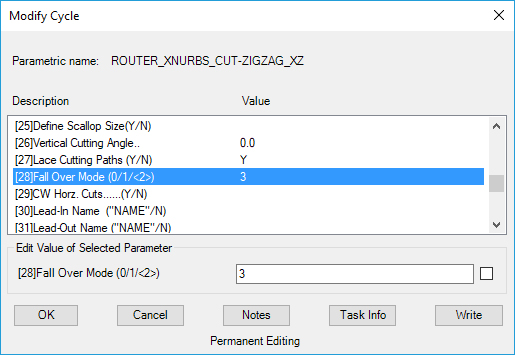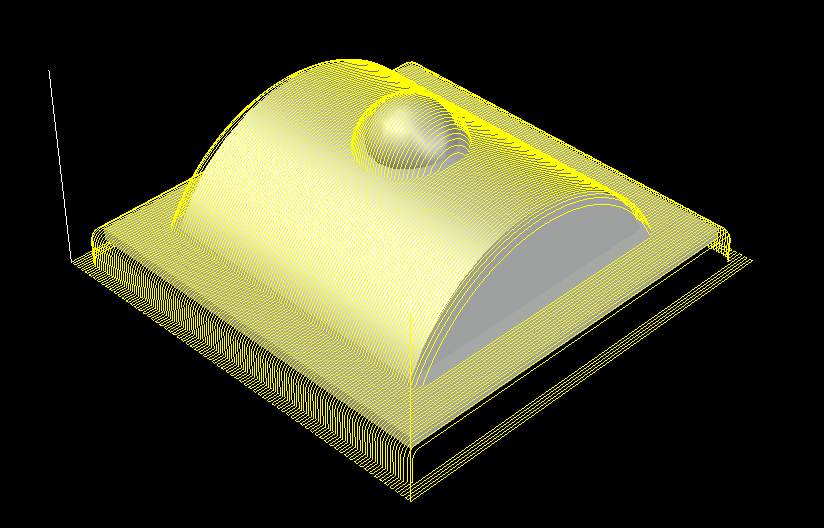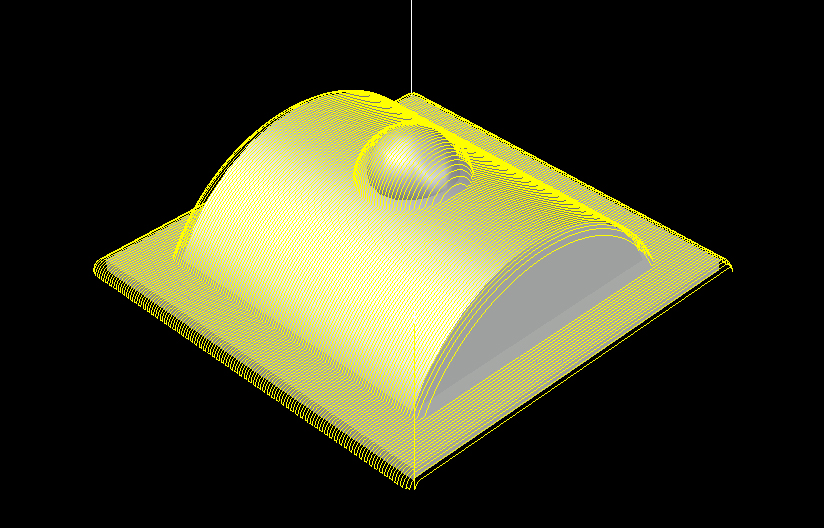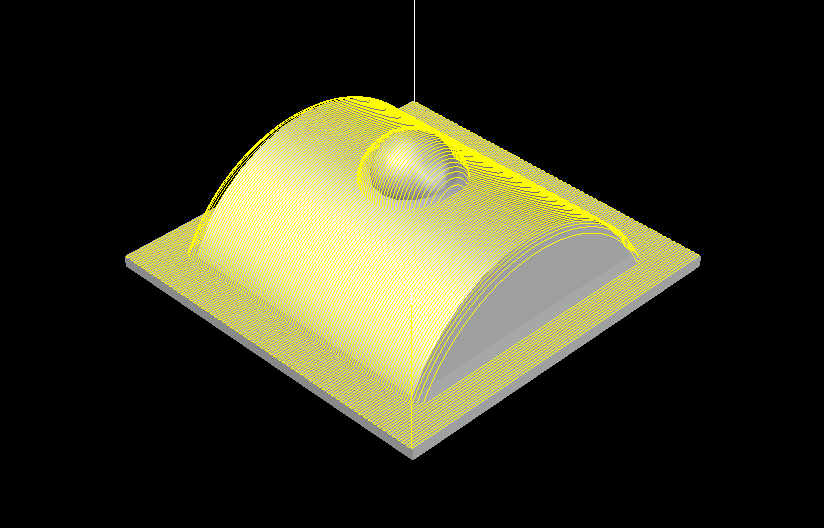There are 4 possible settings for Fall Over Mode. You may specify 0, 1, 2, 3 for this parameter, which will change the behavior of the tool path as follows:
Setting Fall Over Mode:
Using the Modify Cycle button on the Knowledge Editor, select Parameter #28:

In the Edit Value box, type in the mode you want to set and then press Enter. You should see the list update with the number you typed in.
This method will cut down to the Maximum Z Depth set, then move over by a tool diameter in X or Y (depending on cycle) and then move over and return for the next pass.

Fall Over Modes 1 and 2 are the same and switch between vertical slicing in X or Y. There is a slight overcut at the edge of the surface, before the tool path steps over and then returns.

This is the default method if none is specified. The tool path will cut to the edge of the solid or surface and stop, move over and return. There is no Fall Over actually done.
